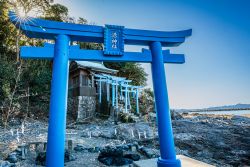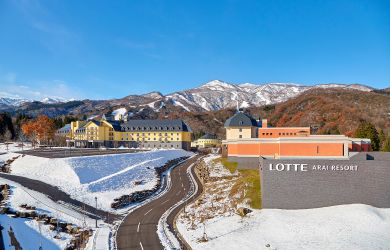
September 2, 2004
In Praise of Slowness
Yunishigawa offers a leisurely glimpse into Japan's illustrious past
By Metropolis
Originally published on metropolis.co.jp on September 2004

Photos by Peter McGurk
“You know, autumn is the best time to come here. The leaves changing color are something to see,” said the old man who had been asleep in a backroom when we’d entered the coffee shop. Although we did our best to make noise, it had taken him ages to shuffle out front and take our order for the coffee and cheesecake set. The only problem was there was no cheesecake. We nearly missed out on coffee too, but he headed to the general store next door. That’s Yunishigawa. Life here is slow.
Nine-hundred years ago, the Taira were the undisputed rulers of Japan until the dissatisfied and rebellious Minamoto rose to challenge their hegemony. In the ensuing clash, the Taira were nearly annihilated, but, legend goes, the survivors fled to this remote mountainous area in what is today Tochigi Prefecture.
They didn’t pick a bad spot either. Nestled in a narrow valley, Yunishigawa is dotted with traditional thatched cottages. A small river winds through the center and its banks are strewn with onsen. Best of all, there’s not a pachinko parlor to be seen.
Heike-no-Sato, the village’s number one attraction, is a pleasant five-minute walk along the river. We wandered among the reconstructed houses and got a taste of what life must have been like hundreds of years ago. Traditional handicrafts, like wood and straw workings, were also on show. Most interesting was the displayed copies of the 20-volume romantic epic, Heike Monogatari. The tale, one of the most famous in Japan, describes the events surrounding the clash between the Taira and Minamoto.
In it, a celebrated episode features 16-year-old Atsumori Taira. With the decisive battle already lost and the Taira in disarray, the warrior-prince had the chance to escape. But angered and shamed by the taunts of his enemies, he turned to make a stand-his last stand. The Minamoto fell upon him and his bravery was rewarded with decapitation. A life-size model of the young Taira dressed in full battle gear is on view, but his size is perhaps the most remarkable-he’s no bigger than a 12-year-old today.

There are several places to stay in Yunishigawa, but a good one in the center of the village is Honke Bankyu Bankyu Ryokan. The owners claim to be direct descendants of the Taira-25th generation to be exact-and whether true or not, their ryokan is indeed atmospheric and had us dreaming of another age and place. (But only after we overcame the shock of finding sensibly sized indoor sandals waiting for us.)
The sound of a gong resounded in the lobby to welcome us, and dinner was equally memorable. As night fell, we made our way across a lantern-lit rope bridge to an expansive banquet hall, once the living quarters of clan noblemen. Under a ceiling supported by ancient tree trunks, low tables and chairs were arranged around traditional Japanese hearths or irori. We watched as local river fish, duck, salmon and beef were grilled slowly over smoldering coals.
Vegetables, mainly from the surrounding mountains, and sashimi were served kaiseki-style. Servings were small but numerous enough to ensure we waddled back over the bridge full and slightly worse for wear after indulging a little too freely in the takezake, served warm in a bamboo flute after being heated in the hearth.
After dinner, the proprietress gave us the traditional welcome. Dressed in full medieval-style costume and looking as if she’d just stepped out of the Heike Monogatari, she was a striking sight. The illusion was shattered a little, though, when a drunken salaryman and his two female companions insisted she pose for pictures in a scene more reminiscent of a cheap snack bar than a medieval court.
We allowed the food and drink settle before heading off to one of the rotemburo, or outdoor baths. A variety were on offer but we chose one of the three private ones (¥1,000 for 45 minutes), and lolled comfortably in seclusion just yards from the riverbank.
Yunishigawa doesn’t offer much to do around the village but that’s its allure. It’s not about tramping around seeing the sights. It’s about easing into the slow lane. Enjoying home-cooked food and drink, soaking in a private bath, and listening to the river are great ways to recharge the batteries a world away from the neon lights and crowded trains of Tokyo.
Take the Tobu Line from Asakusa to Kinugawa Onsen (prices vary depending on trains) and transfer to the Tobu Bus for a scenic one-hour trip with views of thickly forested landscapes and occasional lakes to Yunishigawa. Kinugawa Onsen is also easily reached from Nikko, and a trip to Yunishigawa can easily be combined with a visit to Nikko’s world heritage temples. For this option, four-day, all-inclusive Tobu travel passes are available for ¥5,740. The Honke Bankyu Bankyu Ryokan takes online bookings in English at bankyu.co.jp. See japaneseguesthouses.com for reservations at the larger Bankyu Hotel, with rooms from ¥10,000 per person per night depending on season. For information in English about Tochigi prefecture, visit pref.tochigi.jp/kokusai/english.
[geo_mashup_map]





